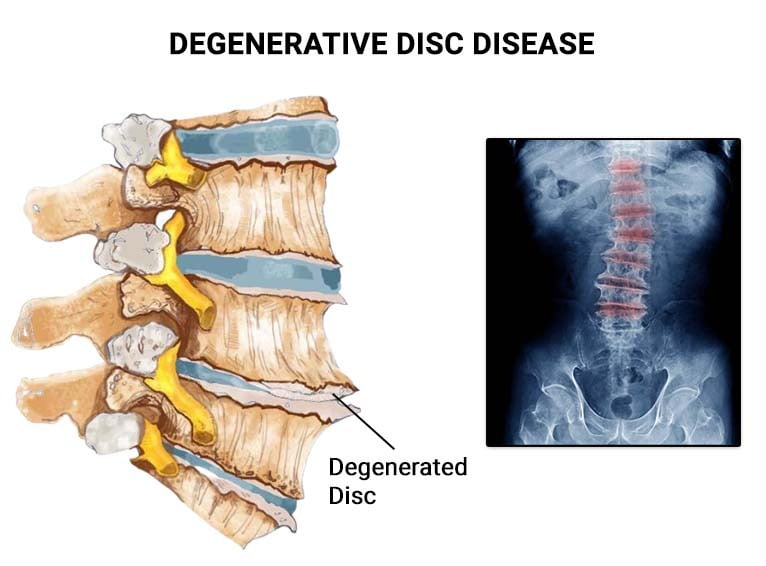What is Degenerative Disc Disease?
Degenerative disc disease (DDD) is the natural wear and tear of the spinal discs that act as cushions between the vertebrae. As these discs deteriorate over time, they cause back pain, stiffness, and reduced flexibility.
For a lot of people, being diagnosed with DDD feels like the end of their sports career. However, with the right mindset, high-level athletes have shown that it doesn’t have to be. Every case is different, but how you choose to approach your injury makes a massive difference. Staying positive is the first step to getting back to high-level competition.
Mental
It is important to understand that you will never be able to train the way you may have before discovering your DDD, and that is okay! You are adapting, not quitting. To give yourself the best chance at competing again you must mentally accept the diagnosis and focus on the long game.
The long game means strategy, patience, and discipline. Modify, don’t quit. This memes having to adjust workouts and training styles to reduce strain. Be proactive. Pain management and prevention are just as crucial as skill training now.
Train Differently
Reducing spinal stress while maintaining strength, endurance, and explosiveness is how you will be able to continue to play. Strengthening the core is crucial. Avoiding deadlifts and squats until you can manage them is important as well. It is most important to strengthen the actual back as much as you are able. Back extensions and hamstring strengtheners are important to prioritize. LowBackAbility.com is a great place to start in strengthening your back.
There will have to be a change in how you prepare, but once the game begins you don’t want to have to think about how you are moving, twisting, and bending. The goal is to prepare so well, that you can go into a game and forget about your back injury.
Pre and Post Game
An extended warm-up should be put in place. A longer, dynamic warm-up preps the spine and muscles. Bracing and support. Some athletes benefit from lumbar support braces. Targeted activation. Core activation drills like dead bugs ensure proper engagement.
Hydration matters. Dehydration can make inflammation and stiffness worse. Drink plenty of water and supplement electrolytes if possible.
Stretch and mobilize to prevent stiffness buildup. Cold therapy and anti-inflammatories reduce pain and swelling. Active recovery, like light movement the next day, aids in healing.
Don’t be dumb!
Playing through pain is part of the game, but knowing when to get medical attention is essential. Red flags include: Worsening pain that limits movement. Tingling or numbness in the legs or arms. Loss of strength or coordination. In some cases, treatments like spinal injections or surgery may be necessary to prolong an athlete’s career. This is the last option hopefully.
Athletes Who Beat the Odds
– Dwight Howard modified his training to remain dominant in the NBA.
– Rob Gronkowski managed spinal issues while excelling in the NFL.
– Tiger Woods underwent multiple back surgeries but still won The Masters.
Final Thoughts: Playing Smarter, Playing Longer
DDD isn’t a death sentence for an athletic career, it’s a challenge to train smarter, manage pain, and grow. The best athletes adapt, adjust, and continue to compete. The key is listening to your body, making smart changes, and prioritizing long-term spine health. Final Thoughts: Playing Smarter, Playing Longer DDD isn’t a death sentence for an athletic career, it’s a challenge to train smarter, manage pain, and grow. The best athletes adapt, adjust, and continue to compete. The key is listening to your body, making smart changes, and prioritizing long-term spine health.









